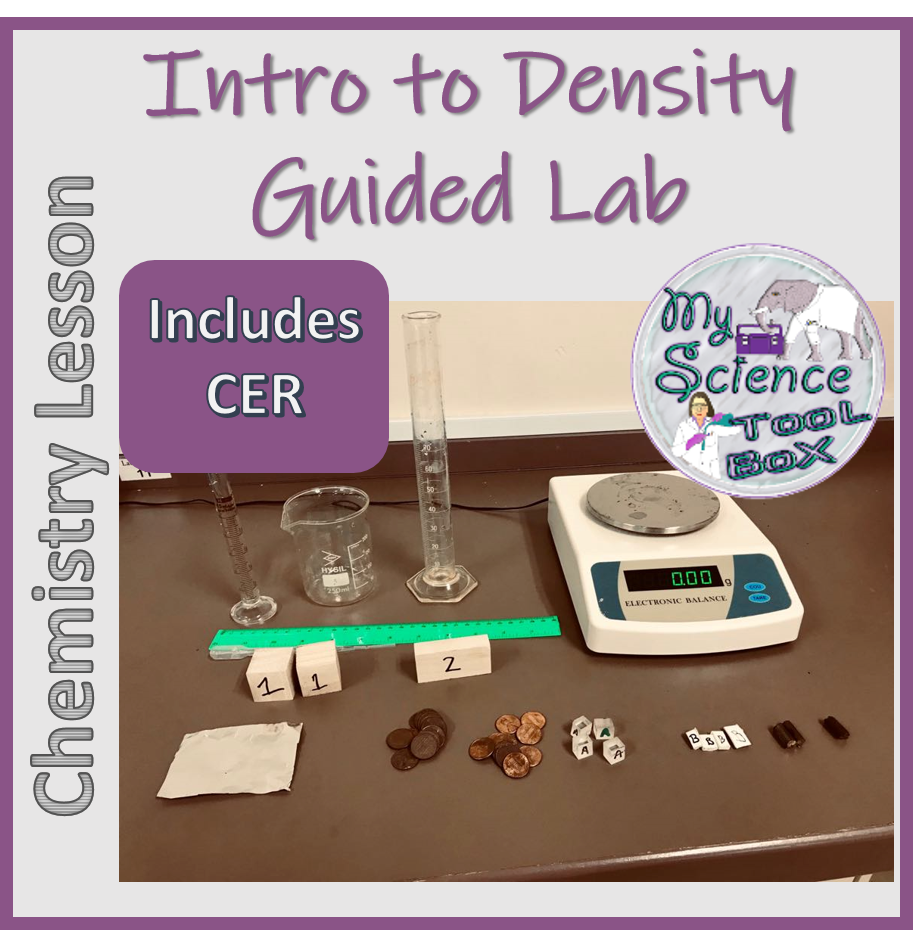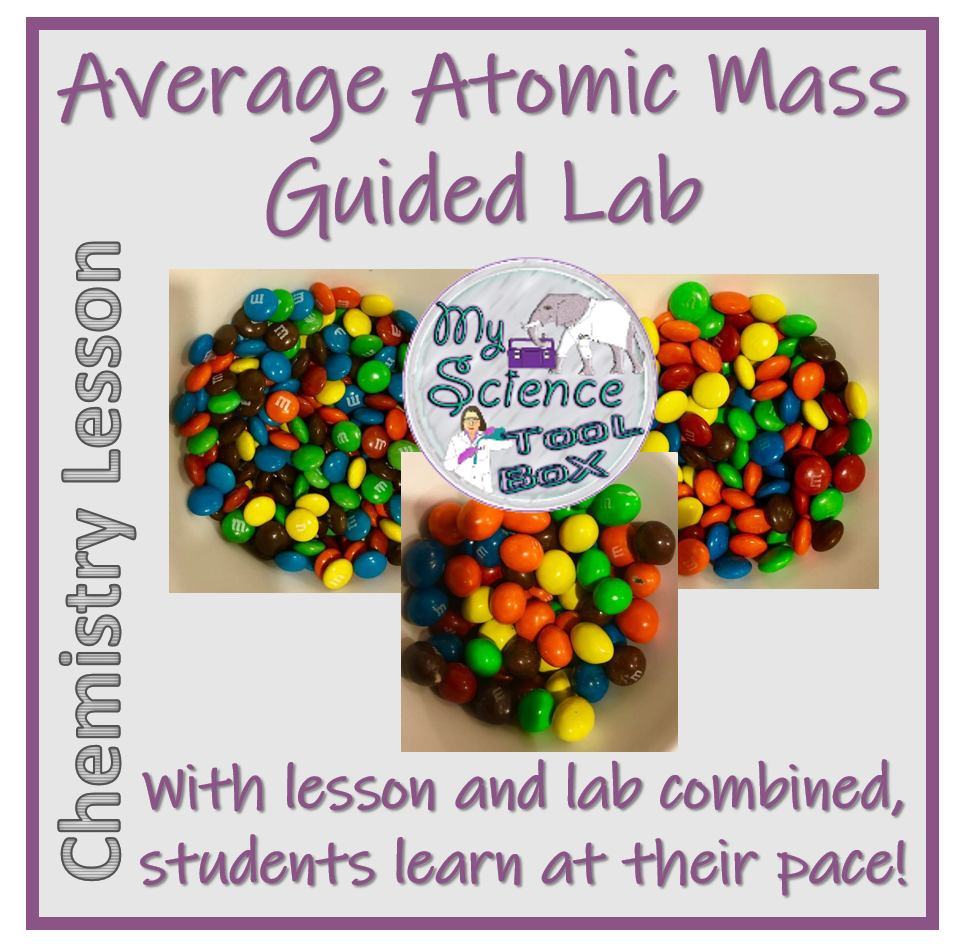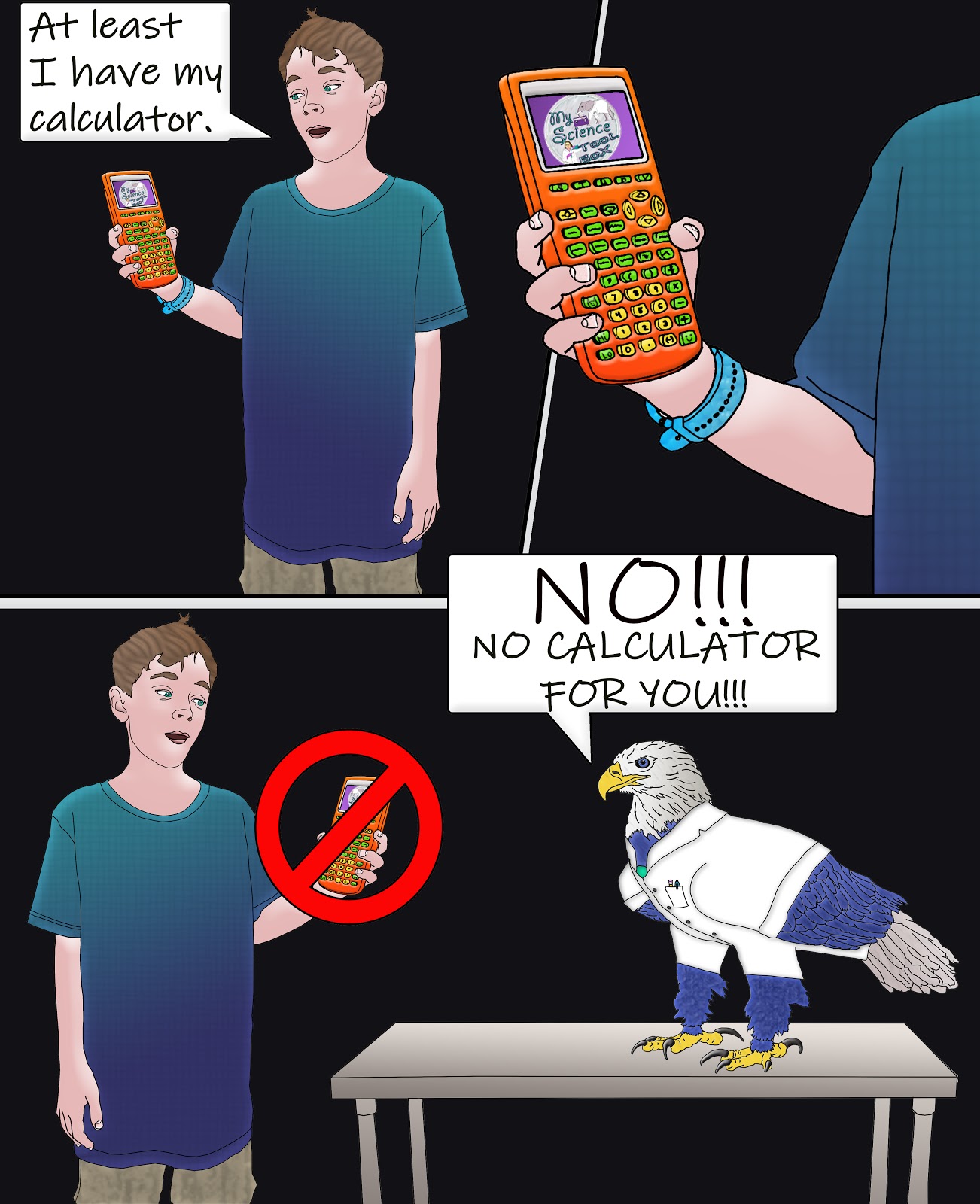Labs! The best and worst thing about being a science teacher at any level.
Truth #1 -- Students love labs. They love having a class period where they get out of their seats and actually get to experience science.
Truth #2 -- Many students do not actually learn anything from labs. Of course, some students do, but many students are so busy following directions (or not following directions, in some cases!) that they don't actually think about what they are doing or why they are doing it.
Truth #3 -- Labs are very time consuming for the teacher, including preparation, set-up, material collection, and clean-up. (Even more so if it's a lab you haven't done before so you need to run through it first.)
 |
| These poor chemistry students following step-by-step directions might as well have blindfolds on. |
I have had a principal walk in during a lab on boiling point elevation, and ask a student who is boiling water, "What are you doing?" The student answered, "Boiling water." The principal continued... "Why?" Student: "Because it says to right here." Major teacher facepalm moment. Did we go over the purpose of this lab beforehand? Of course. Did it correlate directly to the content we'd been working on for weeks? Of course. Did any of that matter once the student blindly started reading a list of directions? No.
 |
| Labs, with goofy teenagers, can be a stressful time for teachers. |
I have tried to tackle the issue of labs in many different ways throughout the past 20 years. I know labs can be very valuable, and I know students enjoy them. I know labs are an important part of science instruction. If students know all the answers but don't understand how to answer a question in the lab, they really don't understand science. I have tried pre- and post- lab quizzes. I have walked students through the entire procedure the day before. And yet, somehow, lab days are always so stressful.
This has been slightly improved by having students write their own lab procedures, but that doesn't work for every lab. In a chemistry classroom, there are many situations where it just doesn't work (practically or timewise) for students to write their own labs. They just don't know enough to know all the little details about how these labs work, which is why they're in the class to begin with!
What Wasn't Really Working
In the past when I have introduced students to calorimetry, we do a few math problems and then I give them a lab in which they follow the procedure to find the specific heat of an unknown metal.
Inevitably, students are on autopilot following cookbook-style directions without thinking about how this directly relates to what we've learned. They don't look ahead to further steps, or the final goal of the lab, and simply take it one step at a time. It's as if they're reading a story one sentence at a time, without thinking about the overall plot of the story.
 |
| Students boiling water for chemistry lab. Do they ALL know exactly WHY they are doing this? |
Depending on the purpose of the lab, sometimes it needs to be exact, and sometimes it can be estimated. They should think: "Does it have to be exactly boiling or is getting it pretty hot and recording the temperature okay?"
Again, this depends on the lab. These are all questions that we as science teachers want our students to think about and make decisions about, but again, once they get in the lab, the thinking stops, and they just follow directions.
Until... I Had An Epiphany!
I realized that my goal in a lab was for students to be able to improve upon and use their reasoning abilities to answer a guiding question that directly relates to the subject matter we learned in class. As mentioned previously, this wasn't working because students (even very strong students) were being TOO "guided" with the lab packet of directions.
So, I approached the next lab much differently.
This time, as I introduced calorimetry, I didn't send them directly to the lab. First we talked about the purpose of calorimetry and how it would be used to find the specific heat of an unknown metal. I talked about the procedure conceptually, guiding the students through major ideas.
I then put them in groups to summarize the procedure we talked about. I then told them that in a week, they'd be doing this lab themselves, but they would not receive any directions.
The next day we solved more calorimetry math problems. As an opening question, we discussed some conceptual ideas about the lab.
For the next week, as we continued to dive into different topics in thermochemistry, we started each day with an opening question that mentioned the lab.
Why do we do such and such?
What happens when you do such and such?
What would happen if we did such and such on accident?
Why is doing such and such this way important?
The day before the lab I showed them the lab set up and pointed out a few small details they would want to pay attention to. I asked them if they had any questions, and a few students did.
They were actually thinking ahead of time about the lab.
As they asked questions, I asked their classmates to think about how they would answer, and we had great class discussions, as students thought about the purpose of the lab, the final goal, and how they would get there.
I tried not to answer their questions, but guide their classmates to answer their questions.
This was DIRECTLY relating the content to the lab experience, and getting them to think critically about it.
 |
Students executing lab procedures
from their own notes from class
and helping each other in the
process.
|
Lab day
The students walked in, found their randomly assigned partner, and started to attempt to answer the question - What is the specific heat of this metal?
I did not give them any lab directions at all. It was the calmest, least hectic lab day I have ever had (and did I mention it fell on the day before spring break?).
Students got the best results I've ever had on this lab. I heard them asking each other questions (but none to me!).
I heard them talking through the procedure with each other - reminding each other what they were doing. And as a teacher, it was amazing to watch. Student after student, group after group, class after class -- they were all performing an experiment to answer a question.
Now We Were Getting Somewhere
They were now APPLYING what they had learned in class- NOT blindly following a procedure of just being dependent on provided step-by-step directions. This was real science!
With previous labs students got caught up in the wording of the procedure. They read step 1 and focused on that, without looking ahead to what step 2 is. They had trouble finishing the labs on time because they went through each step, methodically, along with their lab partner instead of splitting up the work. Even though steps are separated -- step 1 and then step 2 -- sometimes those steps can be completed simultaneously, to save time. But to know if that's possible, students need to understand the lab at a deeper level than simply following directions. They followed steps without understanding why they were doing it. By taking away the "autopilot step-by-step GPS navigation system", the lab directions packet, I was able to observe students working together to successfully answer a guiding question, completely on their own.
 |
| Students discussing lab results. |
A few units later, I did the same thing with the acid-base titration lab. In the lessons leading up to the lab, we not only went through the concept of titration, but the specific lab steps, and why each step was important, and possible errors that could happen. Again, lab day was so much simpler without a lab procedure.
This obviously will not work for every lab. And it takes a lot of planning ahead to be able to prepare students for a lab for a week. And yes, it is important for students to learn how to follow a procedure in the lab. I encourage you to try this for a lab that it will work well with - a lab that will integrate seamlessly into your content for that topic.
Alternate Method
For other labs, I have tried a second method that is a little less time consuming.
For this one, instead of just having students read the lab the day before, we do a little "Reader's Theatre" and model the lab procedure.
I give every student a copy of the procedure and have them read it out loud with a partner. Reading it out loud gives them a little better concentration than silent reading does.
I then randomly choose two students to come to the front to "model" it.
I have a basket with all of the lab equipment they will need. Student A reads the procedure, one step at a time. Student B models the use of the equipment, without actually measuring anything or using any consumables.
When something doesn't quite look right, I stop them, and have the class give hints. For example, one of the steps involved filtering a substance through a funnel. Student B put the filter paper in the funnel and then modeled pouring the liquid into the funnel.
I stopped and asked the class -- "Uh oh, what's wrong here?" A few noticed - the imaginary liquid is going through the funnel and pouring all over the floor. So we knew to put a beaker underneath the funnel, even though the directions did not explicitly state this.
My goal is for students to read a procedure and understand what to do. When I tell them just to read it, they read it and see the words, but still go into the lab dazed and confused. 😵
Reader's Theatre obviously takes a lot of class time. When I model "practicing" the lab, they learn that they can do that at home. When reading a lab later in the year, they can go through the motions, instead of simply reading it, and then they know what questions to ask before lab and what directions were not clear for them.
After a few labs of "Reader's Theatre" you can ask students to do the same with a partner or at home, which really improves their understanding of procedure BEFORE coming to lab.
Lab Reports
Finally, let's talk about lab reports. Lab reports can be a pain to grade, especially when students do not understand exactly how to do them. However, the process of writing about a lab is a very important skill for science students to learn.
 |
| 6 Scaffolding Strategies to Use with Your Students: Edutopia |
For the first semester, instead of requiring a full-length lab report, I scaffold skills so students get feedback on each part, on one skill at a time.
For the first lab, I grade just their procedure and give them detailed feedback.
For another lab, I grade just their data collection and analysis and give them detailed feedback on that.
For the next lab, I grade just their error analysis and give them detailed feedback.
For each part, I give instruction and a rubric just for that part, and allow them to really focus their efforts on that. It also allows me to give much more detailed, helpful feedback, as I am just looking at a small piece of the lab report. After students get my feedback on each part during the first semester they are ready to write a full lab report by the start of the second semester, and the results are ALWAYS better than throwing them out to sink or swim.
The Takeaway
We all know that labs are crucial to science education. But more than just doing labs, it's so important that labs be an integral part of the science class, relating back to the content that we need them to learn, and helping them learn that content better. This take a lot of extra preparation, but can really reduce your stress in the long run.
Happy Labbing!
































